CONSERVATION OF A LYRE FROM UR: A TREATMENT REVIEW
VIRGINIA GREENE
3 INITIAL RESEARCH
Faced with an object that had been restored many decades ago, the first problem was to discover—if possible—exactly what had been done during excavation and in the course of the first restoration.
Fig. 8.
Fragments of the silver beard backing, interior view, ready for mounting. University of Pennsylvania Museum CBS17684 and CBS 17694
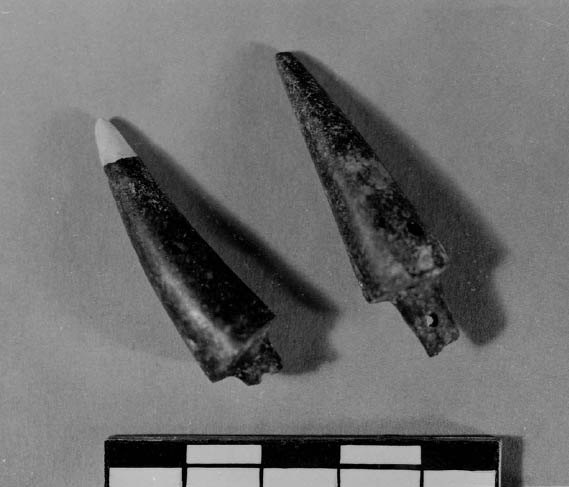 |
The condition of the head when excavated, and some of the restoration procedures, are described by Woolley (1934) in his published report. The bull head had been crushed, and both horns and ears had been displaced from their original positions (de Schauensee 2001, pl. 30). The lapis tiles forming the hair had fallen into the head. The lapis tiles from the beard had shifted and were partly overlapped. The silver sheet backing of the beard was bent and broken. Paraffin wax was poured over all the parts of the head, reinforced with muslin wrapping, and the pieces removed from the ground. After separating the various elements of the bull head, the gold was annealed and reshaped with finger pressure.
According to Woolley (1934, 70), the gold was filled “with plastic wood, plaster, &c.,” and the horns and ears were reattached in the appropriate positions. The silver backing for the beard was “reduced and straightened, and the lapis tesserae, which had been kept in their original order, were replaced” (Woolley 1934, 70). The lapis hair tiles were also reattached to the head; some of these had been preserved in their original positions, and the remainder were placed to fill the gaps.
Fig. 9a.
Position of the silver sheet in relation to the beard tiles, as found in the first restoration
 |
Fig. 9b.
Proposed correct relationship between the silver sheet fragments and the beard tiles
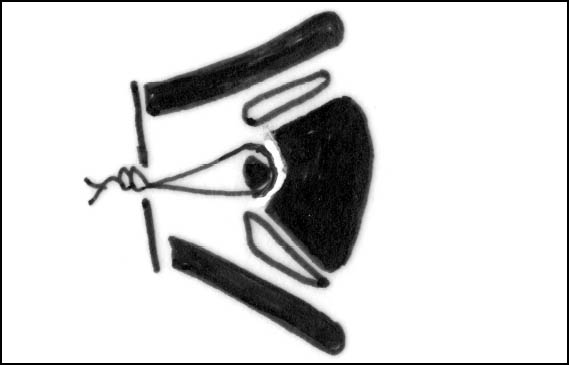 |
Fig. 10.
Section through head and beard, showing proposed original construction. The beard tiles are attached to a layer of fabric that was adhered to the support with bitumen. After the beard assembly was completed, the beard was nailed onto the head core over the gap in the gold sheet.
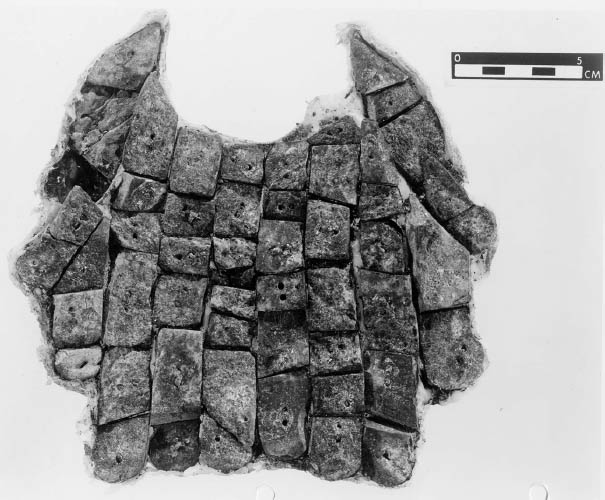 |
Fig. 11.
Proper left horn. The plaster core can be seen beneath the torn gold sheet.
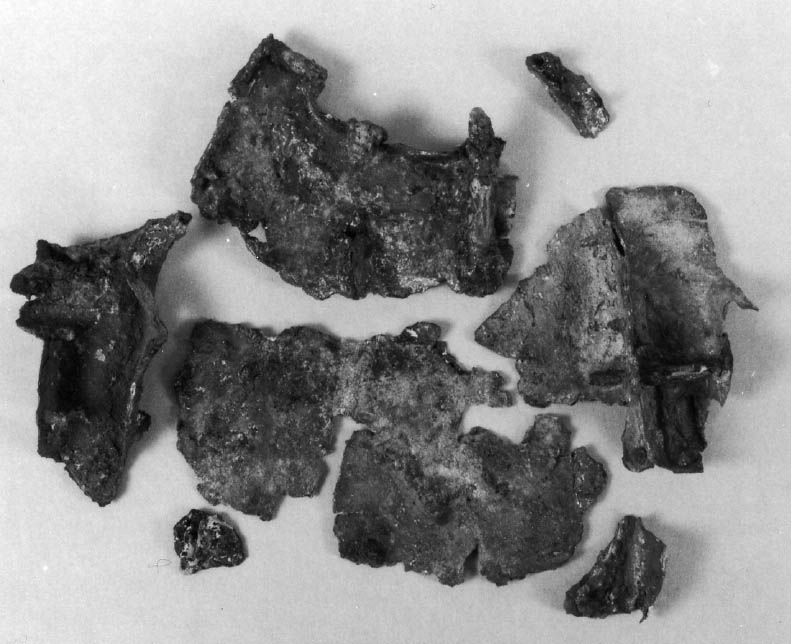 |
Fig. 12.
The head with the plaster neck removed, showing the ends of the iron armature and the broken surface of the beard with multiple layers of plaster and wax
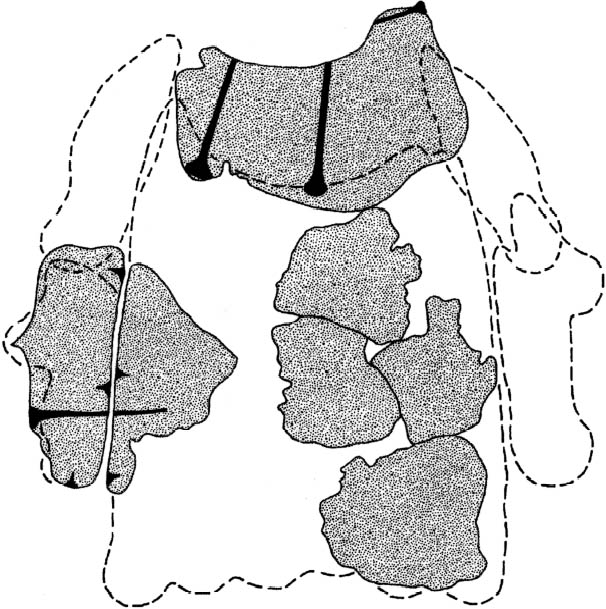 |
The plaque was lifted in the same manner as the head: paraffin wax was poured over the shell pieces, also picking up the powdery remains of the original bitumen adhesive. In the laboratory (location not specified) excess wax was removed, and the plaque was flattened (Woolley 1934, 70).
This brief and unsatisfactory account and two published photographs of the soundbox impression in situ and the head before restoration (Woolley 1934, pls. 106a, b, reprinted in de Schauensee 2001, pls. 26, 30) are the only records of the condition of the head when excavated and of the first restoration procedures. It is not even certain when the restoration was done, or where, or by whom.2
|





